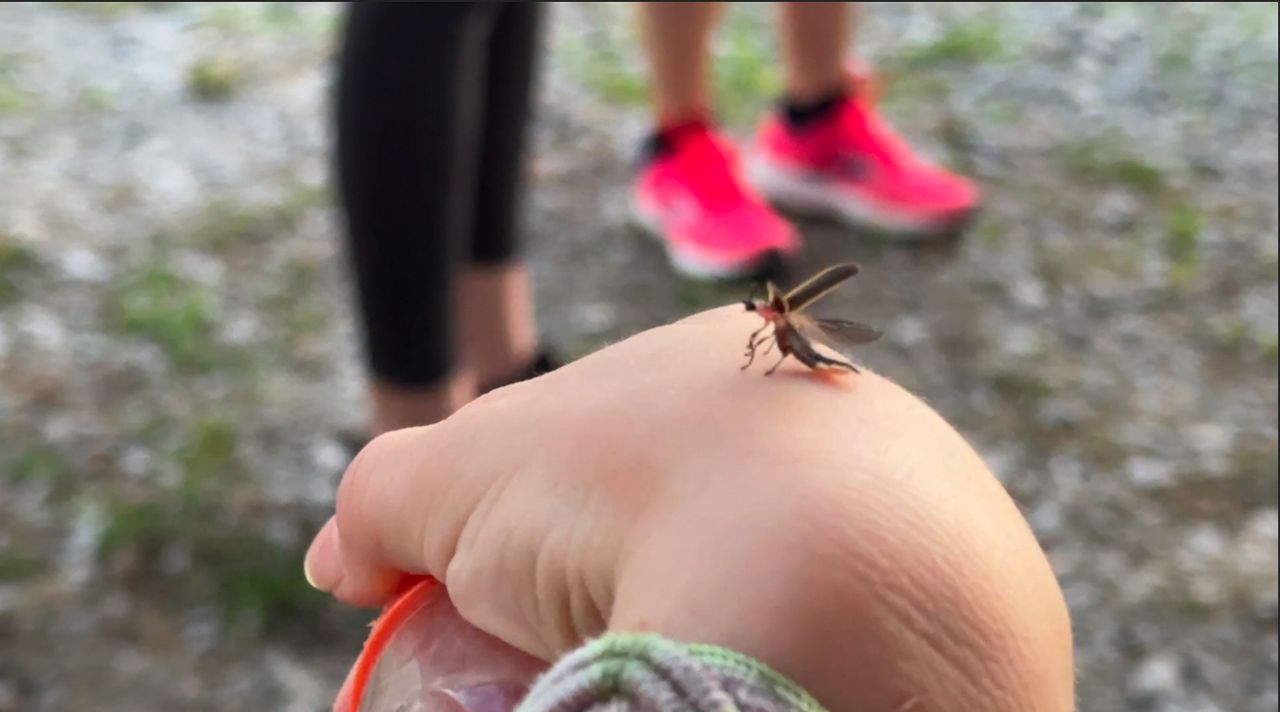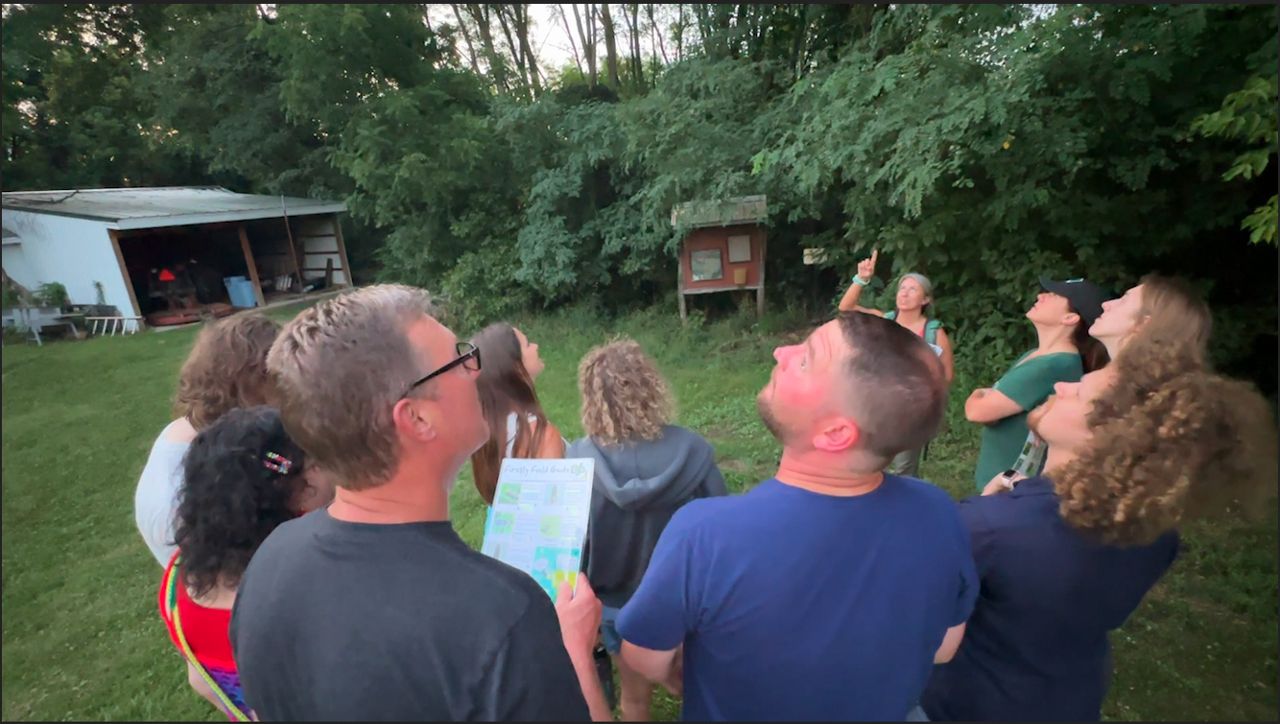LOVELAND, Ohio – When the sun sets on a summer evening, Jana Marshall believes that’s one of the best times to see nature come to life. It’s when you might hear choruses of crickets or the screech of an owl echo through the night, and when a summer favorite, the fireflies come out to put on their show.
Marshall hosts a series of educational programs for kids and adults through “The Roaming Naturalist” aimed fostering connection with nature. She hopes the more people know about nature, the more they’ll interact with it and the more they’ll work to preserve it.
Marshall started the Roaming Naturalist during the pandemic to help people use the outdoors to reconnect and keep themselves happy and healthy.
For the past two years, she’s partnered with the Little Miami Conservancy to put on a series of night hikes, including one dedicated to learning to recognize and protect Ohio’s firefly species.

Populations of the insect are on the decline across the country and at least one Ohio species is on the endangered list.
“It’s partly due to habitat fragmentation, the roads, the traffic and our light pollution,” Marshall said.
Her hikes start at the Loveland nature preserve, known as The Grail, precisely to show what can happen when fireflies can thrive.
“No one is coming through here and spraying with pesticides or removing leaf litter and that is what the fireflies need for their habitat,” she said.
Fireflies lay their eggs in fallen leaves or dead logs and when the larvae hatches, it can take up to two years for them to reach maturity. Increasingly, in urban and suburban areas, spaces that go two years undisturbed are getting harder for fireflies to find. According to Marshall, that’s why you may not be seeing as many in your yard as you might remember from your childhood.

“If you’re going through and like shredding your leaves and you know, spraying, then you’ve just removed that generation of fireflies that you’ll see,” she said.
The light also plays a massive role in confusing and disorienting some fireflies, especially those species that come out later at night. The bioluminescent flashes fireflies put off are meant to communicate and attract a mate.
“When there’s so much light pollution, they can’t even find each other to begin with,” Marshall said.
Marshall said the best thing you can do to help fireflies thrive in your yard is to leave an area untouched for leaves and debris to naturally pile up. To reduce light pollution, she suggests turning off your outside lights when you go to sleep or switching to motion-censored lights.
As for spreading that message, Marshall said that’s what her hikes are for.
“I feel like we’re kind of detached a little bit from the natural world and my mission is to reconnect that,” she said.
With her educational programming, she hopes she’s inspiring a sense of curiosity and fascination with nature that can lead to preservation.
“It’s fun to go on hikes, but it’s even more fun when you know about the trees that you’re hiking by and the insects and the fireflies,” she said. “Makes us appreciate our natural world a little bit more.”



